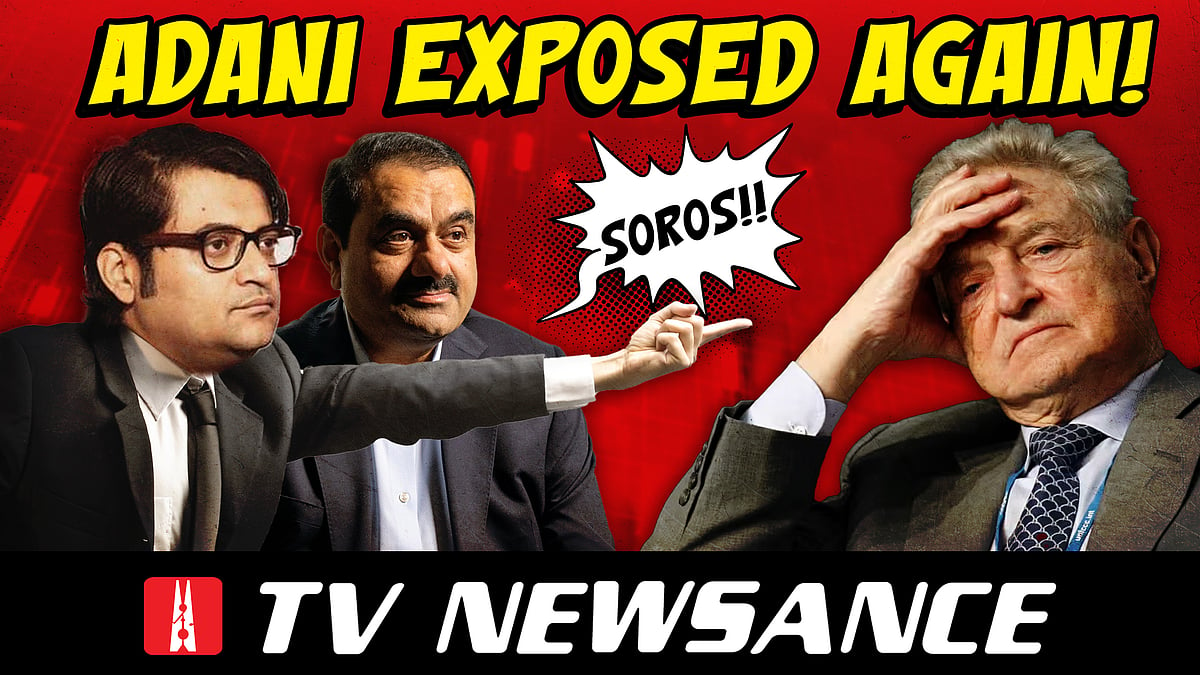Amid G20 hype, exposé on Adani, Vedanta and Manipur crisis relegated to shadows
The spate of breaking news eclipsed the report on Vedanta group’s manoeuvres to bypass environmental laws for mining.
The G20 Summit has taken over the headlines and the news cycle. By the end of the week, the recent exposes on Adani, the opposition alliance’s Mumbai meet, or even the Manipur crisis would have faded from people’s memories.
In the meantime, we also had the surprise announcement of a special session of Parliament from September 18-22 with no indication of the agenda, some kite-flying about whether the name of our country will be 'Bharat' instead of 'India, although it is both in the Constitution, and the proposal of One Nation, One Election. Enough masala to cover up the real and more substantive issues on which the media should continue to keep its focus.
The expose by the Organised Crime and Corruption Reporting Project or OCCRP on the financial dealings of the Adani group, carried in detail in the leading daily Financial Times, and The Guardian, has provoked no more than a murmur in India’s mainstream media. Although, the day after the story broke, newspapers did report it on their front pages, there has been little to nothing by way of a follow up apart from a few editorial comments, such as in Hindustan Times and Indian Express.
Admittedly, the Adani story is complex. It is not easy to understand for readers who are not informed about the way financial markets work. Yet, it is possible for the media to explain it, like this report in Newslaundry.
At times, the silence of the media tells a bigger story than its word.
Sometimes, the silence of the media speaks louder than words about its status. And the ongoing Adani story, exposing cronyism and institutional failures under the current government, must surely qualify as one such instance of silence.
Given its open and blatant biases, the Indian TV news media is not expected to touch the Adani story. Nor are we surprised that the only way it can deal with it is to spin out its usual conspiracy theory, about George Soros being behind the exposes. But mainstream Indian print media’s silence cannot be ignored, especially when independent media, such as the Reporters’ Collective and the stories by M Rajshekhar in Wire have reported on the expose.
The Adani story eclipsed what I believe is as important a story, if not more, by OCCRP on the way the Vedanta group, led by UK-based business tycoon Anil Agarwal, has been the beneficiary of changes made in environmental laws for mining and other related activities.
The investigation has these five key findings:
“Mining and oil giant Vedanta ran a covert lobbying campaign to weaken key environmental regulations during the pandemic.”
“India’s government approved the changes without public consultation and implemented them by using what experts say are illegal methods.”
“In one case, Vedanta led a push to ensure mining companies could produce up to 50 percent more without new environmental approvals.”
“Vedanta’s oil business, Cairn India, also successfully lobbied to have public hearing scrapped for exploratory drilling in oil blocks it won in government auctions.”
“Since then, six of Cairn’s controversial oil projects in Rajasthan have been approved despite local opposition.”
We need to let this sink in. After years of campaigning by environmental groups, laws and regulations were set in place to protect the environment. An important feature was public consultation before any changes were made. This is only one of the rules that has been bypassed. And all this has happened without us noticing because these issues do not find purchase in mainstream media anymore.
Of the other issues subdued by the spate of “breaking news” is, of course, Manipur. Thanks to the fact-finding report by the Editors’ Guild of India, titled 'Media's Reportage on Ethnic Violence in Manipur', and the disproportionate response of Manipur chief minister N Biren Singh to it, what’s happening in that beleaguered state has not been entirely forgotten.
The Manipur state government has filed an FIR against the EGI team accusing them of “promoting enmity between different groups”. Not just that, but Biren Singh has gone on record to call the team members “anti-state, anti-national and anti-establishment”.
Although the Supreme Court has intervened and stayed the arrests of the journalists, the action of the Manipur government is another reminder of how the ruling party in that state, and at the centre, looks at freedom of expression. To them, this fundamental right is purely transactional. One is free to report only information approved by them. Anything contrary is ‘anti-national’.
This is the second such reaction of the state government to fact-finding missions. In July, it had filed an FIR against a three-member group of the National Federation of Indian Women for concluding that the violence was “state-sponsored”. Since then, there have been several such telling reports including one by a group of doctors. In this report in The Hindu, the displaced populations, especially in the Kuki areas, are facing a dire crisis due to a lack of essential supplies even for infants and medications for the ailing. So far, there has been no denial or action against this group of doctors by the state government.
Coming back to the EGI report, it specifically looked at the role of the local media in inflaming the situation in Manipur. It even quoted some instances of this. But it also revealed the structural inequality that is built into the location of media houses.
In most states, media houses concentrate on the capital and some major cities. Many parts of a state, often the most marginalised and deprived, are left uncovered, or barely reported. It’s only when something drastic happens like a natural disaster, or drought and starvation, that these places feature.
Manipur is much the same. The media is located mostly in Imphal and run by the Meiteis. Although the Nagas have a newspaper, Ukhrul Times, and other forms of media, the Kukis have never had an adequate media presence. When a crisis like the present one hits, where two sides are literally at war with each other, even the semblance of a media that reports from all regions disappears.
It is not just the absence of the internet that has affected coverage in the local media, although the unjustified internet shutdown over an extended period is an important factor. More significant has been the way even journalists, who are supposed to set aside their personal identities and biases when they go out to report, have been affected by the passions dividing the state.
This partly explains why the means of communication that were not cut off, such as mobile phones or landlines, were not used to verify news and get reports from parts rendered unreachable by local media during this conflict. After all, many of us have reported in the times when there was no internet, when phoning in your story and sending updates from a landline, or even post office, to the desk wherever it was located, was routine.
Sadly, some Imphal-based journalists continue to resent what they call “parachute journalists” from the “mainland”. Yet had it not been for these journalists, we would not have heard both sides of the story on the Manipur violence. Perhaps, the best of the recent reports on Manipur is this one by Arunabh Saikia for Scroll, that tells us that the problem in the northeastern state is not going to disappear in a hurry. In fact, it is likely to escalate given that now both sides have the support of militant groups who were quiescent for some years.
Whether it is Adani, Vedanta, or Manipur, these are issues that will inform the path India takes in the future. The coverage, or erasure of such issues from the media also informs us about the direction that the Indian media has chosen to take.
 TV Newsance 224: ENBA Awards, OCCRP’s report on Adani and NDTV’s defence pitch
TV Newsance 224: ENBA Awards, OCCRP’s report on Adani and NDTV’s defence pitch The Adani story simplified: Stock manipulation, mystery investors and SEBI role
The Adani story simplified: Stock manipulation, mystery investors and SEBI role